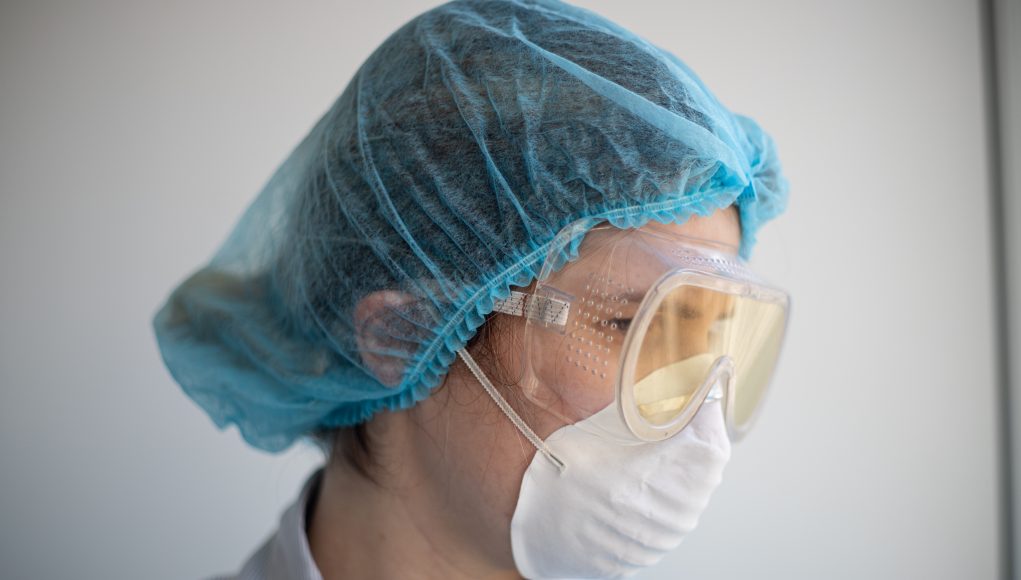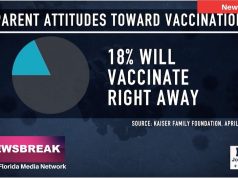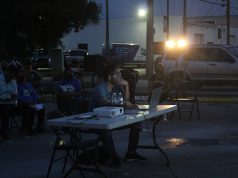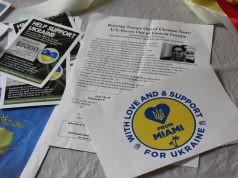As we enter the sixth month of the coronavirus pandemic, essential workers continue to attend to the public’s everyday needs, leaving them overworked, mentally exhausted and having to adjust their daily lives to working in dangerous environments
According to an analysis by the Center for Economic and Policy Research (CEPR), a Washington, DC think thank, nearly 2 million individuals in Florida were labeled “essential” during the start of the COVID-19 pandemic in early March.
THE STORY OF THE HEALTHCARE WORKERS
Research from the Florida Policy Institute, a nonpartisan group based in Orlando, shows that 51% of essential workers in Florida are healthcare workers.
 Anya Perez is employed as a nurse who works in-person at the Homestead Hospital Physical Speech and Therapy Center and remotely for the Coral Gables Rehabilitation Department.
Anya Perez is employed as a nurse who works in-person at the Homestead Hospital Physical Speech and Therapy Center and remotely for the Coral Gables Rehabilitation Department.
“I feel safer in the hospital because I feel that the people I work around with know how serious it is and they definitely protect themselves and their loved ones,” says Perez. “I feel less safe going into Walmart or walking into a restaurant, as crazy as that sounds because the hospital is where the virus is at, but I feel safer there than any other place.”
Working on the frontline caused Perez to face the decision of working remotely to avoid a major risk at home. Perez, whose mom suffers from asthma and has received pneumonia-related medical attention in the past, said she now realizes the danger she put her in.
“I feel like at the beginning I was an extremist because I didn’t want to bring it back home to my mom,” said Perez. “That’s my biggest thing. That I can’t bring it home to her.”
Personal protective equipment was scarce for everyone including healthcare workers at the start of the coronavirus pandemic. Five months ago, at the beginning of her shift at the rehab center in Coral Gables, Perez was given only one surgical face mask a week.
Nurse Annecrystel Joseph became an ICU surgical nurse at Jackson Memorial Hospital in Aug. 2020 where she said there was a similar lack of safety precautions during the beginning of the pandemic.
“Several people in my unit got COVID-19 from helping patients and not wearing the proper equipment. Technically right now they’re very short-staffed,” she said.
By this past August, more than 900 healthcare workers have died from coronavirus.
After completing training at West Coast University in July, Joseph was one of the new graduate nurses called to the frontline. She said that her classes did not fully prepare her for what was to come.
“My last semester, from May till June, was online because of COVID. They pretty much just told us ‘this is what you have to study’ but they never really spoke to us about ‘once you get hired you might see X, Y and Z’,” she said. “You kind of learn that once you start working on the floor.”
One thing Joseph learned from working in the field is that the virus does not discriminate after seeing all of her positive patients come back with many complications as a result of the virus.
“Some of them, they’re not that old. One is 38 and is dealing with the aftermath of COVID. The other patient was 58 and he has been in the hospital maybe a month-and-a-half or two, dealing with COVID,” Joseph said. “Yesterday he passed away.”
Before the pandemic, new grad students working in the ICU were required to establish residency or do some form of an internship program for 4 to 6 months. During this time, Joseph and other new grads are to shadow a veteran nurse.
“My residency is eight weeks and after eight weeks, you’re pretty much totally on your own,” said Joseph.
The urgency for nurses is understandable in an area like Miami-Dade, where global record spikes and positive cases have been recorded. Jackson Memorial Hospital sends its staff weekly email updates about how many COVID-19 beds are in the hospital.
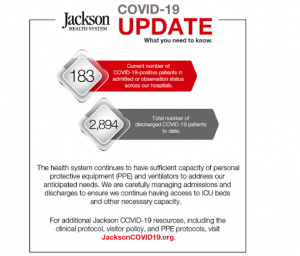
Many hospitals experienced a demand for more staff following the spread of the coronavirus.
Nurse Vanessa Harris was sent to Albany, Georgia after the area was declared a COVID-19 hotspot. She spent 17 weeks on contract at Phoebe Putney Memorial Hospital.
Harris noticed during her orientation that 40-50 nurses were contracted to the same hospital.
“They really needed help because the whole hospital was COVID-19 patients,” said Harris. “They ended up re-opening one of the closed buildings on the hospital grounds and turning it into a COVID patient unit.”
She commends the hospital for its organization. Temperature checks were performed on every guest upon entry and all hospital staff members were required to change their clothes or scrubs before leaving.
“I know for me personally, I don’t want to hear anything more about COVID-19 when I’m not working because it is all really overwhelming,” she said.
Harris is concerned about the future. Her exposure in the healthcare field has given her a pessimistic outlook and she said she would not be surprised if mask-wearing continued for the next five to ten years.
“In the fall when the flu comes around, we will see how we really react to COVID-19. That’s the part I am afraid of,” she said while advising everyone to take all safety precautions like wearing masks and practicing social distancing.
THE STORY OF EDUCATION: Teachers, Parents and Transportation Workers
In Miami-Dade, parents were provided with only one option for educating K-12 students — remote learning.
Since the start of the new school year on Aug. 24, teachers in Miami-Dade have faced challenges with online learning.
Teachers like Jean Jones, an AP literature teacher at Miami Coral Park Senior High School, are still working through the kinks of online discipline and ‘zoom etiquette.’
Jones said that parents now realize how many activities it takes to keep a child busy all day long.
“Parents are realizing what we always knew, and that is that teachers enable America to be able to work or go out to have a social life or be able to exercise,” said Jones. “I’ve never had any illusions about the fact that teachers are not babysitters, but childcare providers first and teachers second. I think that’s something that all new teachers need to understand… Keep kids safe and second is to teach them.”
For teachers in Miami-Dade, there has been a struggle to get kids to focus on online learning.
“It’s kind of like a comedian broadcasting stand-up without an audience, not knowing the jokes are working — if people are laughing,” said Jones who expends gallons of energy to get the crux of his lesson across to students. “I’ll have to constantly say, ‘Are you listening? Are you listening?’”
A 16-year-old Miami-Dade student was charged with hacking K12, a program used at the start of the pandemic for distance learning. Now teachers like Jones and their students use Microsoft Teams to attend class each day. Jones says this program has faults as well.
“Microsoft Teams — there’s no way for them to check 15,000 teachers to make sure they’re actually teaching the full hour and 45 minutes,” said Jones.
In Central Florida, schools in Seminole County are experiencing the start of the school year differently than Miami-Dade this year.
Parents were given four options on how to educate their child this school year: face-to-face, Seminole Connect, Seminole County Virtual schools and a hybrid option. Over 34,000 students were enrolled in the in-person class option.
Krista Thielman is an essential worker and parent of a five-year-old who began kindergarten at Bentley Elementary. She stated she is very pleased she was given the option to send her child to in-person school this year. Though the decision was not made easily.
“My main thing was making sure everyone is equipped with the skills and knowledge to stay safe,” she said. “It’s a little nerve-wracking having to put faith in the other staff and families.”
For Thielman, the teachers seem to have a positive attitude and it shows in her daughter’s mood. The simple experience of her child physically going to school has added a bit of normalcy back into her family’s life.
“She will come home excited to tell us about her day and how she was able to play with her friends even though they have to keep distant which is hard for her,” said Thielman. “Sometimes she will get really sad and say ‘My friends won’t hug me’ or ‘my teacher won’t hug me’ but she’s adjusting.”
The teachers in Seminole have been strict, reminding students to wear masks, wash their hands and continue to social distance during school hours.
“I don’t have any greater respect for anyone than I do teacher’s right now. They are willing to do the work and happy to be back,” said Thielman.
In Seminole, students were told to register for the bus this year though the number of students per bus was limited due to COVID.
Alfred Harris Jr, a lead bus driver said there have been a lot of changes put in place to protect students and transportation staff from COVID-19.
“Everything is a learning experience this year,” said Harris. “We may start off one way and have to change it.”


























